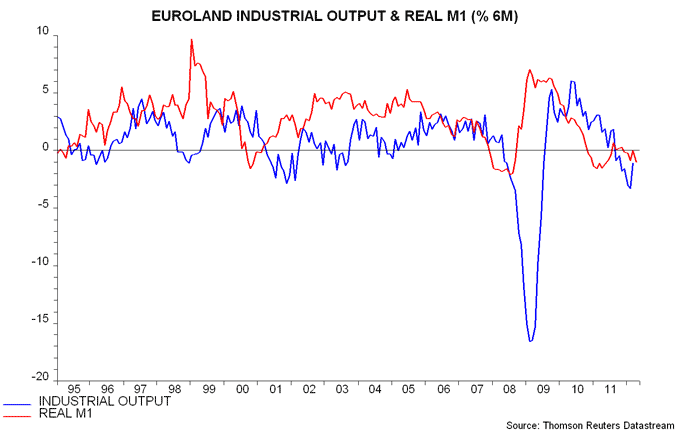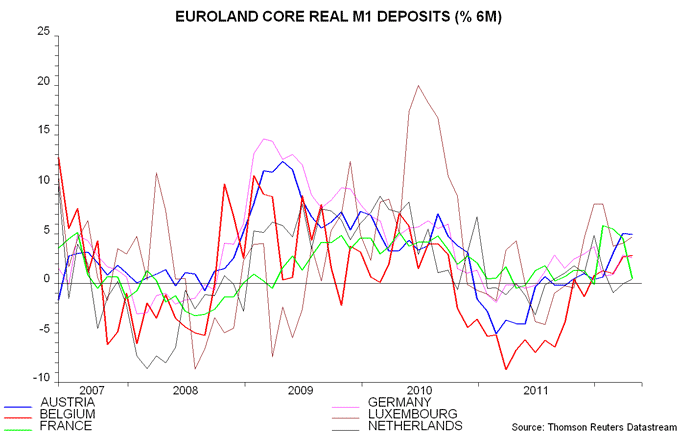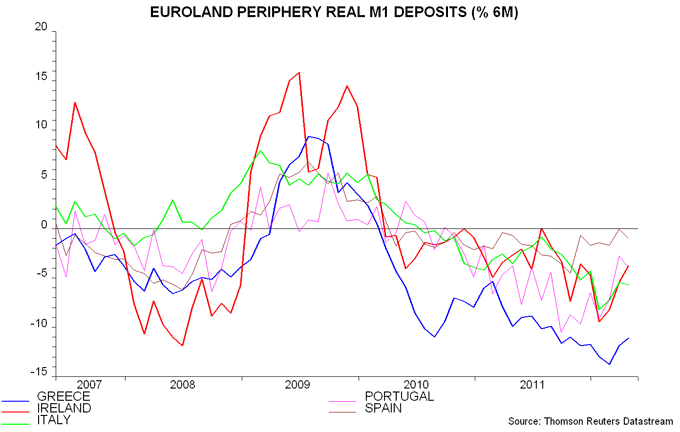Eurozone money numbers: the bazooka wasn't enough
Hope engendered by better Eurozone monetary data for February and March has been dampened by weak April statistics released today. Broad money M3 fell by 0.5% last month after a 1.4% gain in February / March. M1 numbers were still more disappointing, with a 1.1% April decline leaving the measure up by only 0.1% since January.
Real M1 (i.e. M1 deflated by seasonally-adjusted consumer prices) is judged here to be the best monetary leading indicator of the economy – it foreshadowed the current and previous (i.e. 2008-09) recessions as well as the interim recovery, as the first chart below shows. A tentative revival in February / March was wiped out in April, pushing the measure to a new low for the decline that started in September 2010. The suggestion is that the recession will extend into late 2012 while the monetary foundations for a recovery have yet to be laid.
M1 comprises currency and overnight deposits. The ECB releases a country breakdown of deposits but not currency. Weakness, unsurprisingly, remains focused on the periphery – second chart. The six-month change in real M1 (i.e. overnight) deposits is strongest in Austria, Luxembourg, Belgium and Germany and most negative in Greece, Italy and Portugal – third and fourth charts.
ECB President Draghi’s attempt to engineer QE through the back door by funnelling cash to banks for them to buy bonds and onlend may have represented his only feasible option but has failed to deliver sufficient stimulus to offset the contractionary impact of capital flight and an ill-timed regulatory demand to boost capital ratios. The central bank’s “monetary pillar” now demands “full” QE, which should be conducted via purchases of longer-maturity bonds across national markets in proportion to GDP – the ECB’s role is to provide the monetary basis for Eurozone-wide economic growth, not to act as “lender of last resort” to particular governments. The impact of bond purchases on bank reserves can be “sterilised” by auctioning more one-week deposits, if this spares the Bundesbank’s blushes – such an operation is cosmetic since reserves and one-week deposits are fungible. The key requirement is to deliver a direct boost to the broad money supply (hence the focus on longer-maturity bonds more likely to be held by non-banks).





Reader Comments